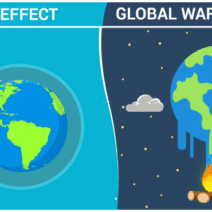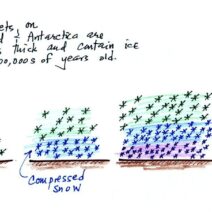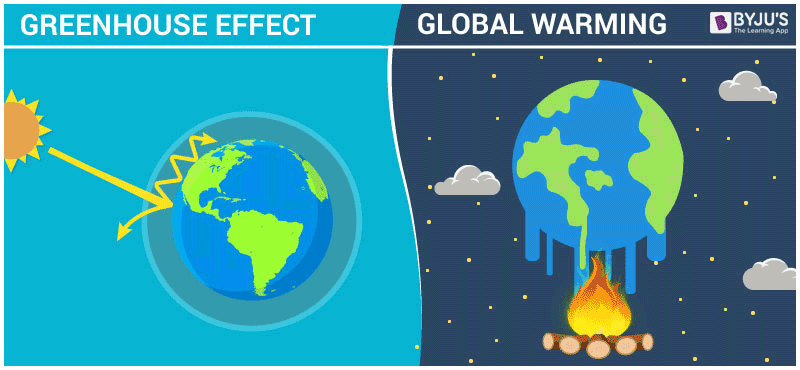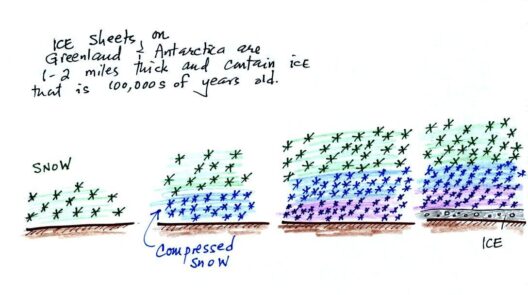In the grand tapestry of Earth’s atmosphere, two threads intertwine yet serve distinct purposes: the greenhouse effect and global warming. To the untrained eye, they may appear indistinguishable, like two artworks that share a canvas but convey vastly different stories. Understanding their nuances is crucial in grasping the broader narrative of climate change and our role within it.
The greenhouse effect is a natural phenomenon, akin to a thermal blanket enveloping our planet. It occurs when certain gases in the atmosphere—known as greenhouse gases—trap heat from the sun. This process maintains Earth’s temperature, enabling it to support life. Imagine a warm embrace on a chilly night; it is this embrace that keeps the planet warm enough to sustain ecosystems, agriculture, and human civilization. Key players in this embrace include carbon dioxide, methane, and nitrous oxide. These gases allow sunlight to enter but hinder some of the heat from escaping back into space, effectively insulating the planet.
However, while the greenhouse effect is essential for life, it is not without its limitations. The delicate equilibrium that has sustained Earth for millennia is now under siege. In stark contrast, global warming refers specifically to the long-term increase in Earth’s average surface temperature, primarily due to human activities that amplify the greenhouse effect. Here lies the crux of the issue: our actions, particularly the burning of fossil fuels and deforestation, have escalated the concentration of greenhouse gases, creating a thicker blanket that traps more heat than ever before.
This exacerbation of the greenhouse effect is the fossil fuel industry’s splendor and tragedy. Each gallon of gasoline burned, every ounce of coal extracted, contributes to the rising tide of global temperatures. Picture a tightly sealed greenhouse where plants flourish. Initially, the growth seems promising, but as temperatures soar and oxygen diminishes, the ecosystem begins to falter. Likewise, while the greenhouse effect supports life, the rampant acceleration of global warming threatens to unravel the very fabric of our biosphere.
As the mercury rises, the implications of global warming become more acute. The polar ice caps, those majestic sentinels of the Earth, are melting at unprecedented rates. As they disintegrate, they release fresh water into the oceans, disrupting currents and accelerating sea-level rise. Coastal cities, once deemed safe harbors for millions, now brace for the encroaching tide. This is not mere speculation; it is a scientific certainty corroborated by rigorous empirical data.
Moreover, global warming precipitates extreme weather events that ravage the planet. Imagine a storm system gathering strength, fueled by the excess heat trapped in the atmosphere. Hurricanes, droughts, and wildfires become more frequent and ferocious, adversely affecting agricultural productivity and threatening food security. Regions once deemed habitable may soon slip into desolation, causing a cascade of humanitarian crises as populations are forced to migrate in search of stability.
In this alarming narrative, the greenhouse effect morphs from a nurturing ally into a perilous adversary. This transformation underscores the urgency for change. While the greenhouse effect is intrinsic to our survival, unmitigated global warming brings with it existential risks. It beckons us to question our dependency on fossil fuels and challenges societal constructs that prioritize short-term gain over long-term sustainability.
To combat the impending threats of global warming, we must recalibrate our relationship with energy. Renewable sources—solar, wind, hydro—offer the promise of a cleaner future. Picture energy systems that harness nature’s bounty without depleting it. In this vision, sunlight is converted into electricity, and wind is harnessed to power our lives, circumventing the destructive cycle of carbon emissions. Such transformations are not merely wishful thinking; they are palpable solutions already gaining traction around the globe.
Moreover, we must delve into conservation practices that enhance the resilience of our ecosystems. Reforestation initiatives, green urban planning, and sustainable agriculture can act as bulwarks against the onslaught of climate change. Just as nature has its own cycles of renewal, so too must our approaches to land and resource management evolve. These strategies not only mitigate the effects of global warming but also reincorporate the greenhouse effect as a benevolent component of a balanced environment.
Education plays a pivotal role in this metamorphosis. By fostering awareness of the distinctions between the greenhouse effect and global warming, society can cultivate informed citizens ready to advocate for systemic change. Imagery of a world steeped in climate literacy captures the essence of an empowered populace, one that understands the consequences of action and inaction alike.
In conclusion, while the greenhouse effect is a vital process that underpins life on Earth, global warming represents a perilous trajectory precipitated by human actions. The two interact in complex ways, but their distinction is critical in the battle against climate change. To preserve the planet and its intricate ecosystems, we must channel our collective will into sustaining the greenhouse effect while combating the detrimental ramifications of global warming. This is not merely a struggle for survival; it is a quest for a harmonious existence within our planetary confines.







